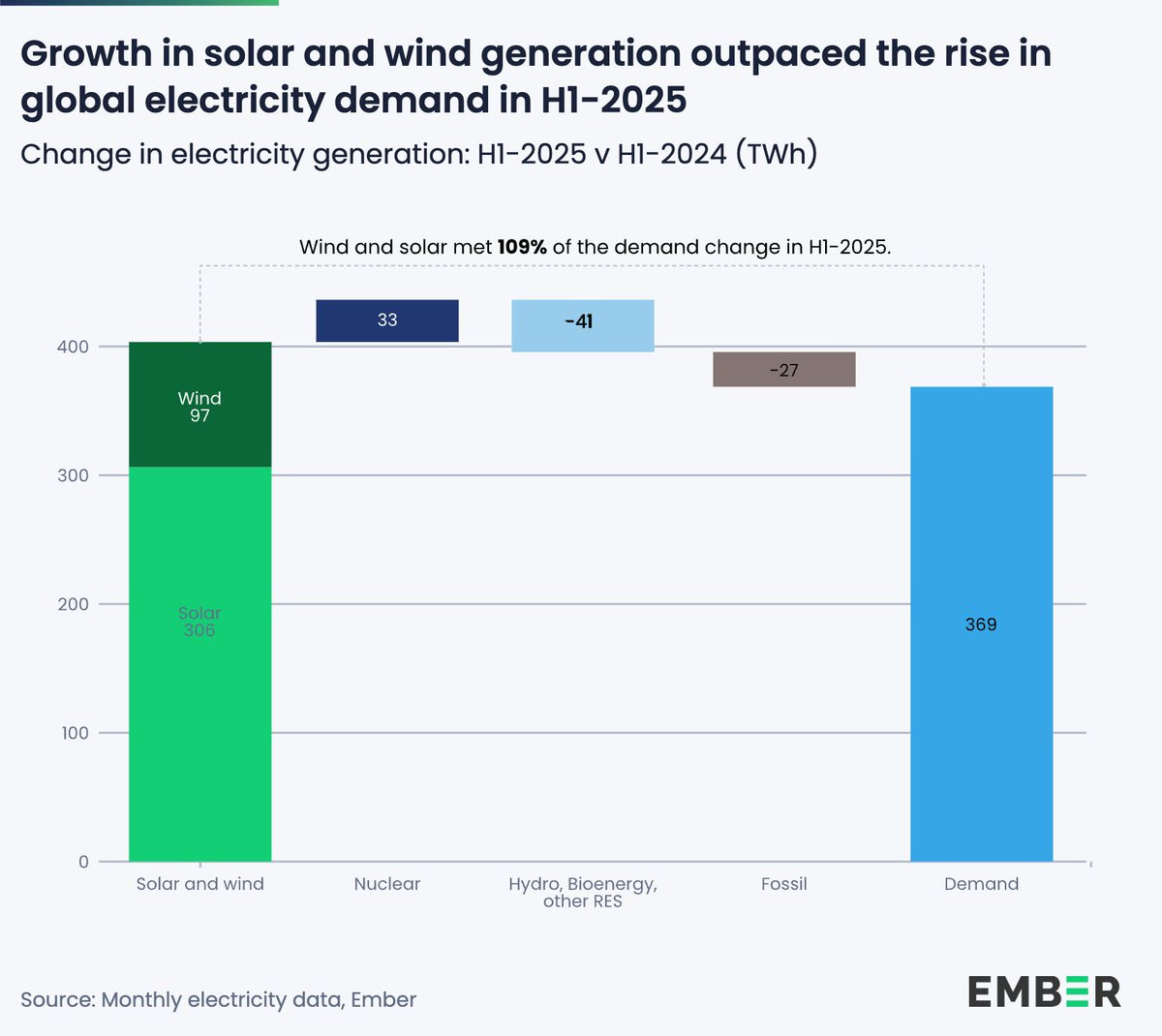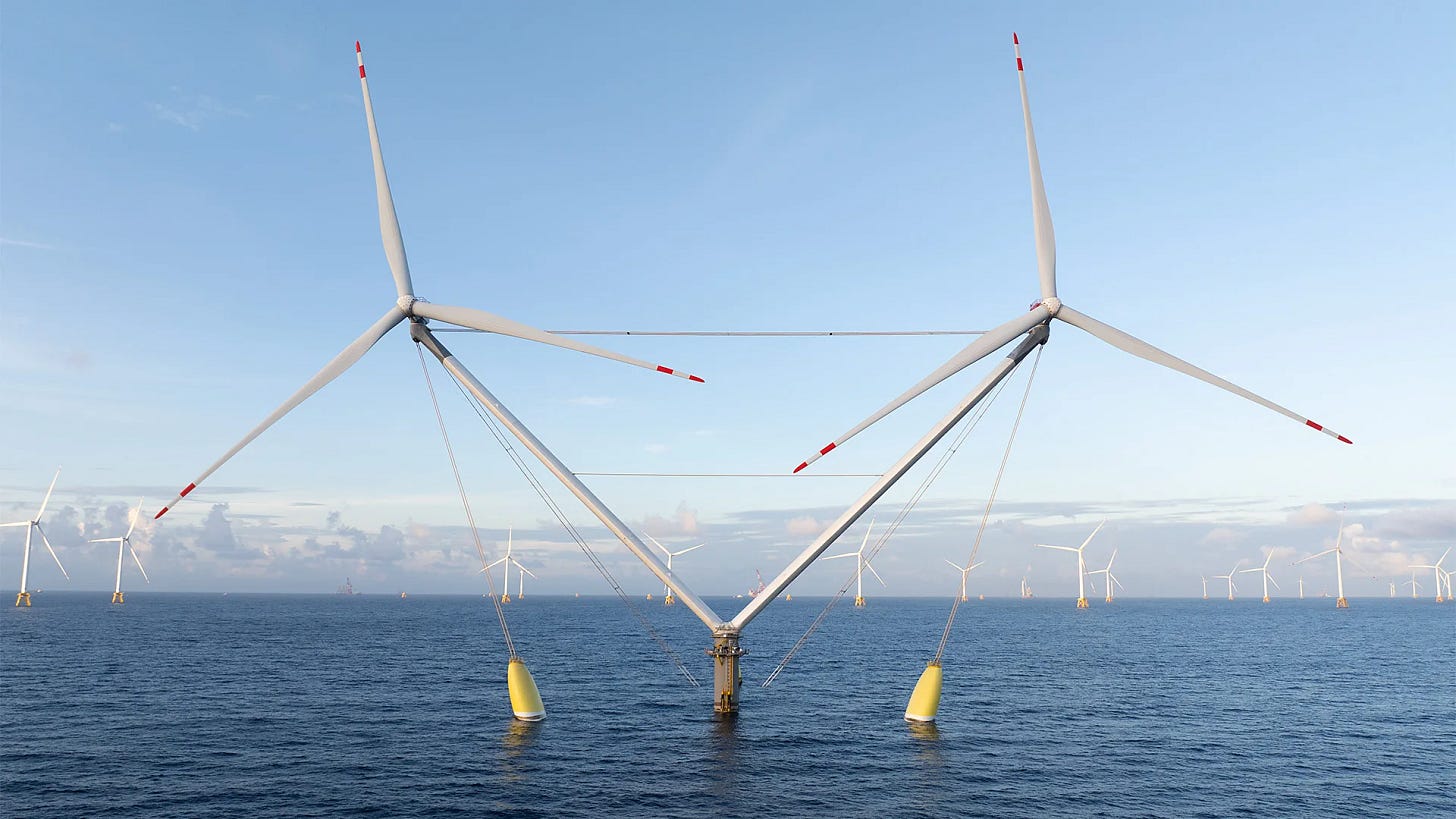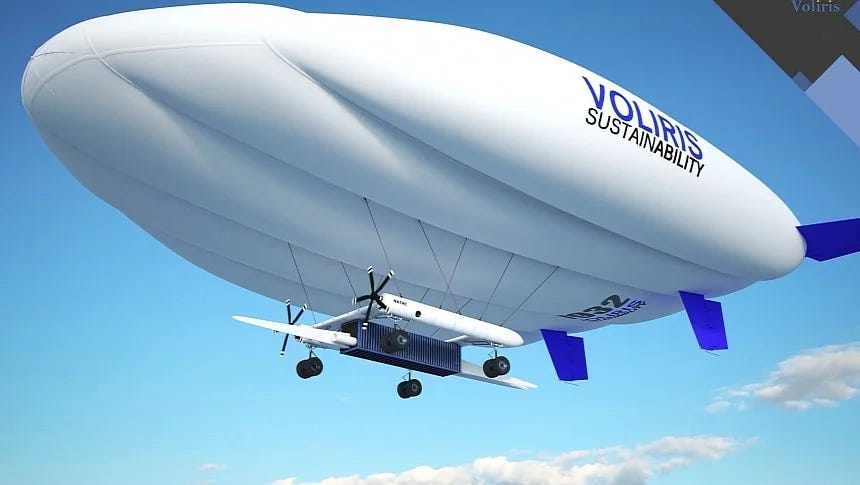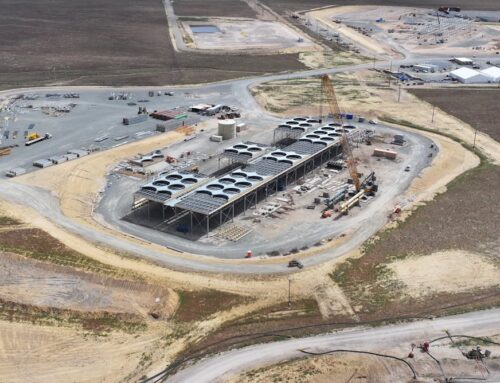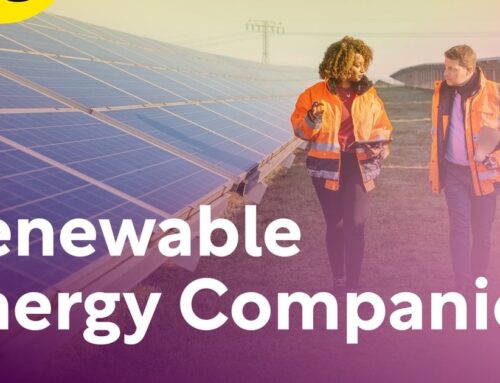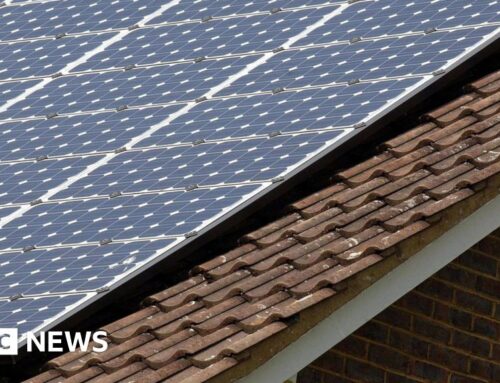Something extraordinary just happened
October 8, 2025
But of course there’s a but. Or two.
Yesterday was one of those days when you can feel the world shifting. The thinktank Ember reported that for the first half of 2025 renewable energy produced more electricity than coal. More to the point, solar and wind grew so fast that they covered all the growth in demand for electricity so far this year, with room to spare.
That means that fossil fuel emissions for producing electricity plateaued—even fell slightly—over the first half of the year. It’s an epochal moment: it demonstrates that the clean energy transition is not destined to be the slow, dragged-out affair that most analysts would have predicted even five years ago.
“The fall overall of fossil may be small, but it is significant,” said one of the Ember researchers. “This is a turning point when we see emissions plateauing.” Fossil fuel use for electric generation fell 2 percent in China, and dipped in India as well.
We are allowed to celebrate good news—indeed, in the shadow of our disintegrating democracy it’s necessary that we celebrate what we can when we can. But not because this is a fait accompli—instead, because celebrations along the way give us new strength to push harder for faster change. Which we desperately need to do.
Because we we got new data about the earth this week too, and it’s epochal as well. And also bad. A study in Nature looked at four of the largest systems on earth—the Greenland ice sheet, the Atlantic currents, the South Asian monsoon, and the Amazon rainforest—and found that in each case “the stability of these four tipping elements has declined in recent decades, suggesting that they have moved towards their critical thresholds, which may be crossed within the range of unmitigated anthropogenic warming.”
Another way of saying this is: the damage from the carbon and methane trapping heat in our atmosphere has now reached the most critical systems for supporting life on our planet. We have very little time, if any.
And the other caveat to today’s good news is that it didn’t apply to the U.S.—growth in electric demand outpaced new renewable supply in this country, meaning that we poured more, not less, carbon into the air in the first half of the year. Which is hardly surprising, given the Trump administration’s all out war on clean energy. We are quickly emerging as the planet’s rogue nation, determined to deny climate and slow the energy transition as best we can, all in the name of selling more fossil fuel. As Mitchell Beer writes
“The forecast for the United States is revised down by almost 50%” from a year ago, the report states, after the Trump administration phased out federal renewable energy tax credits ahead of schedule, imposed severe import restrictions on renewables industries, suspended new offshore wind leasing, and curtailed wind and solar leasing on federal lands.
That sets up the third piece of epochal news, this one more about economics and hence politics. Though not many people paid too much attention, new data this week showed that China is now exporting more clean energy than the U.S. is exporting dirty energy.
The US, which has positioned itself as a major fossil fuel exporter, sold $80 billion in oil and gas abroad through July, the last month with data available. China exported $120 billion in green technology over the same period.
With that number, you can feel world leadership passing from Washington to Beijing. It’s even more remarkable because the thing that China is mostly exporting—solar panels—keeps getting cheaper and cheaper
Dollars only tell part of the story. The price of solar panels is falling, which means that China is exporting more of them per dollar earned. August’s solar export revenue was nowhere near the high set in March 2023. But the 46,000 megawatts of power capacity shipped abroad set a record.
As Edward White writes in the Financial Times,
While US President Donald Trump calls climate change a con, China is offering new technology and products to countries to develop green energy and to prepare for increasingly frequent and intense storms, floods and droughts.
Two days after our Changsha trip I attended a meeting in Beijing of Chinese officials and representatives of climate-vulnerable nations, a group that includes 74 nations with more than 1.8bn people.
Liz Thompson, a former UN assistant secretary-general and now climate change ambassador for Barbados, said just as climate-vulnerable states are hit by more disasters, they are hampered in their response because of a lack of access to technology and financing. “These challenges provide compelling reasons to work more closely with China,” she said.
Chinese officials and business leaders are keen to oblige. Zhang Shiguo, executive director of China New Energy International Alliance, an organisation backed by government associations and renewable companies, said the country’s green products had already reached 170 countries. “The reason China’s new energy sector has done well is the determination to act,” Zhang added.
The bewildering disgrace of America’s conduct in the world—a disgrace due entirely to the Trump administration, which continues to dismember the Biden-era efforts to compete with China in the clean energy field—is outweighed by the good news from the rest of the world: the atmosphere doesn’t care which nation the co2 comes from. But it should be one more spur—alongside the sickening pictures from Chicago—for all of us to do what we can to restore the rule of reason in our country. No Kings Day is October 18. Here’s a guide that we at Third Act have put together for finding the demonstration near you.
In other energy and climate news:
+India’s railways are electrifying fast, and will reach their 2030 net-zero targets five years ahead of schedule
+We’re a month out from the next global climate talks, which will be held in Belem, Brazil, and the contours of the negotiations are emerging. John Ainger has a useful report
Ultimately, one of the main markers of success for COP30 could be proving that the diplomacy show is still on the road after the US, the world’s largest economy and biggest historical emitter of CO2, abandons the process.
Harjeet Singh, a longtime COP participant and founding director of the Satat Sampada Climate Foundation, said one “beacon of hope” emerged earlier this year, when the International Court of Justice said countries have a responsibility to do what they can to limit global warming to the critical threshold of 1.5C.
+Surprising no one who’s been paying attention, a big new study finds that carbon offsets have been an abysmal failure. As Ajit Naranjan chronicles
The failure of carbon offsets to cut planet-heating pollution is “not due to a few bad apples”, a review paper has found, but down to deep-seated systemic problems that incremental change will not solve.
Research over two decades has found “intractable” problems that have made carbon credits in most big programmes poor quality, according to the study. While the industry and diplomats have made efforts to improve the system, it found much-awaited rules agreed at a UN climate summit last year “did not substantially address the quality problem”.
“We must stop expecting carbon offsetting to work at scale,” said Stephen Lezak, a researcher at the University of Oxford’s Smith School and co-author of the study, in Annual Reviews. “We have assessed 25 years of evidence and almost everything up until this point has failed.”
Carbon offsets are a tool to cut emissions efficiently by crediting rich polluters for financing cheap climate action abroad while pumping out the same amount of planet-heating gas at home.
+Climate dramas seem to be a thing! If you’re in LA, here’s info about The Year We Disappeared, “An Improbable Comedy About Climate Collapse Through the Findings of James Hansen’s Science During the Reagan-Bush Years.”
Meanwhile, Kyoto, a “political thriller” about the late twentieth century climate negotiations, is making the leap from London’s West End to New York’s Lincoln Center
Saving the Earth is a filthy business. Welcome to the Kyoto Conference Centre, December 11, 1997. The nations of the world are in deadlock. Time is running out and a climate change agreement feels a world away. The greatest obstacle: American oil lobbyist and master strategist, Don Pearlman… Declared “gripping” (The Times), “extraordinarily funny” (Variety), and a “genuinely daring” (Evening Standard) “triumph” (Telegraph), KYOTO asks who gets to decide what’s worth saving when the entire planet is at risk—and what we’re willing to give up so we can move forward, together.
+I think Solar United Neighbors is one of the most remarkable groups in the country. They’ve concentrated on helping people build rooftop solar, but in the wake of Trump’s trashing of tax credits for that work, they’ve also been pushing for larger solar farms. They have a way of talking about renewables that makes sense to many people: here’s a bit of their recent work in Indiana, which will hopefully serve to counter the industry disinformation that has scotched many projects across the heartland
Creating energy isn’t a new endeavor on Indiana farmland. In 2024, 43% of Indiana’s corn went to ethanol production. But, in terms of land-use efficiency, solar beats ethanol in multiple metrics. Most importantly, solar is 20 times more efficient than ethanol, even when accounting for useful byproducts such as animal feed. Harvesting solar energy rather than ethanol leads to less pollution from fertilizer runoff and less erosion from tillage while providing a new drought resistant revenue stream.
The loss of farmland should be taken seriously, but the reality is that solar is not the driving force of farmland loss. Between 2013 and 2021, only 5% of lost Indiana farmland was converted to energy production (which includes new wind, natural gas, biomass, and solar production), while 68% of lost agricultural land was developed into homes and neighborhoods. And solar, unlike housing developments, can be returned to agricultural land at the end of its useful life.
Adding solar does not have to stop agricultural production on farmland. Agrivoltaics, the term for agriculture plus photovoltaics (solar energy technology), is a practice that can create efficient dual-use purposes for farmland. In Indiana, there are already a growing number of sheep herds, pollinator habitats, and crop studies under solar panels.
And on this question of land use, here’s Mark Jacobson of Stanford on video busting all the myths about renewables and land use. A good thing to forward to people worried about this
+The pundit Matthew Yglesias suggests that environmental groups working in elections back off questionnaires that try to pin politicians down, and instead elect Democrats broadly in alignment with progressive goals. It’s worth a read, even from someone who has routinely downplayed the seriousness of the climate crisis.
+China is quickly building a network of offshore wind turbines designed to withstand the typhoons that often strafe the coast
A good example is a model called OceanX manufactured by China’s Mingyang Smart Energy Group.
With a floating foundation, the OceanX model supports not just one but two turbines. The main reason behind the unique design is to increase the platform’s output. Compared to a single turbine whose blades swipe across the same area as OceanX’s two turbines combined, OceanX can generate 4.29% more electricity, according to Mingyang. This is because the two turbines’ blades spin side by side in opposite directions – one clockwise and the other anti-clockwise – so the wind between them will blow faster, enabling more electrical energy to be converted from air kinetic energy, the company says.
But the floating platform also has plenty of intriguing features to counter typhoons and stay balanced during extreme weather, says Wang Chao, the turbine’s chief designer. For example, its foundation is tied to the bottom of the ocean by ropes via one single point underneath it. This allows the structure to change its orientation more easily to be aligned with the wind. “As long as the turbines face the typhoon, the load (forces) they take will be the smallest and they will be the safest,” Wang says
+For years, the fossil fuel industry has used ‘stability’ as an argument against renewable energy on the grid. But as batteries have plummeted in cost, that’s actually become one of the biggest selling points: solar plus batteries, for instance, were credited with stabilizing the Texas grid this summer, even amidst high temperatures. What doesn’t help? Coal. The newest, biggest coal-fired power plant in the U.S., also in Texas, went offline after a catastrophic accident in April. It now appears it will be out of service until…April 2027. As Seth Feaster explains,
The outages at Sandy Creek are also reminiscent of the operating problems at another major new coal plant. Comanche 3, a 750-MW coal-fired unit in Colorado that came online in 2010 and is majority-owned by state-regulated utility Xcel Energy. From its opening, it had a history of unexpected and costly outages, capped by a year-long closure starting in January 2020 that was caused by a catastrophic loss of lubricating oil, extensively damaging the turbine and generator.
Facing a backlash from ratepayers and the Colorado Public Utilities Commission, Xcel ultimately reached an agreement to close the plant in 2030, some 40 years earlier than its originally planned retirement. As part of that settlement, Xcel also agreed to gradually step down the use of the plant between 2025 and 2030.
This agreement may soon be challenged by the Trump administration, which is trying to keep coal plants across the country from closing —regardless of the cost to ratepayers and the reliability of the plants—under the guise of an energy emergency and 90-day orders to stay open from the U.S. Department of Energy.
+The always-interesting Hannah Ritchie has a report on a topic I knew nothing about: apparently, we could eliminate most of the heat-trapping contrails from passenger jets just by rerouting them for a minute or two to avoid the areas where the condensation is most likely to form.
One crucial reason why eliminating contrails could be so cost-effective is that a very small percentage of flights create the majority of the impact. This means we don’t need to divert or shift the trajectory of all the world’s flights; only a few percent of them.
Just 3% of flights generate 80% of the warming. A further 14% generate 29%.
Using detailed weather forecasts, satellite images, and flight plans, scientists can identify where these zones will be far in advance and work with flight planners to find a way to reroute flights crossing these zones to avoid them
+As veteran readers know, my real hope for the future of air travel is…blimps (in no small part because I rode in one once, and it was unbelievable fun). Anyway, a new French venture is getting close to putting out a cargo blimp
A subsidiary of the NYFI industrial group, Voliris has been making all sorts of innovative aircraft, airships in particular, for over two decades. Its latest concept is also the most complex: an air cargo shuttle with an enormous inflatable wing, engines, and an automated flight system. It’s called NATAC (Navette Aérienne de Transport Automatique de Containers/Automatic Air Shuttle for Containers) and it’s referred to as an aircraft, although it doesn’t look like one.
This concept is innovative in more ways than one; it’s foldable and inflatable, which makes it very easy to ship to different locations; it’s fully automated so that it can operate without human intervention; and it’s 100% hydrogen-compatible – for now, this means that the airship component can switch from helium to hydrogen as the carrier gas, but in the future, its engines could also use hydrogen as fuel.
Capacity-wise, this heavy-duty workhorse is designed to carry up to 30 tons of cargo. Thanks to its hybrid airship design, it can do so with four times less engine power than a conventional cargo aircraft and doesn’t need ballast when setting down its payload. The entire structure can be shipped via container to any location (ten standard 40-foot/12-meter containers are enough) and then inflated on-site.
Search
RECENT PRESS RELEASES
Related Post
